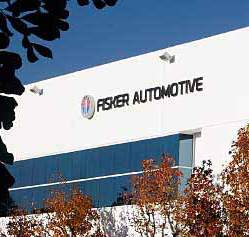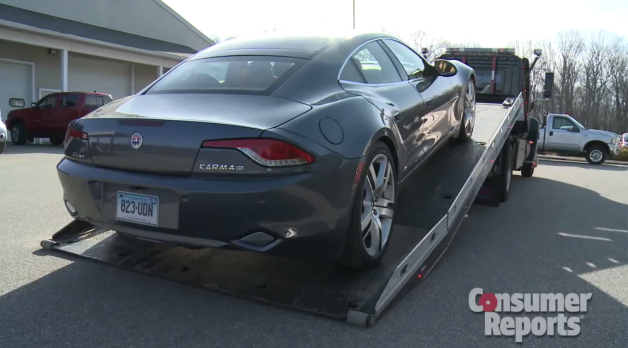Scroll down for updates on Fisker Automotive's bankruptcy and the Department of Energy loan.
(February 13, 2014)
On Wednesday, Fisker Automotive went up for auction in bankruptcy court where two Chinese companies bid aggressively for ownership of the defunct electric car maker. When finalized, the sale will both illustrate the folly of the Department of Energy’s decision to put taxpayer money into the company in 2009, and provide insight into how poorly the DOE protected taxpayers once it went belly-up. Regardless of the auction’s outcome, the carmaker’s bankruptcy is a stark example of why making risky investments with public money is a bad deal for taxpayers.

The Loan Program Office(LPO) of the DOE awarded Fisker Automotive a direct loan of $528.7 million in September of 2009 through the Advanced Technology Vehicles Manufacturing (ATVM) project, even though signs of trouble for the company were already evident. By the time the loan was officially closed in April 2010, the expected launch date for Fisker’s flagship electric vehicle, the Karma, had already been pushed back a number of months. In February 2011, the company claimed it had met its target full-scale commercial production date, fulfilling a condition of the loan agreement. The DOE disagreed, however, and suspended further installments of the loan in June (four months after the fact). By that time, Fisker had already drawn down $192 million, and the odds of them repaying that quickly became dim.
After finally reaching the marketplace in September 2011, the $100,000+ Karma sold poorly and was beleaguered by a number of performance problems. Its batteries overheated. Its software was faulty. Sometimes it died altogether, like the one that went kaput on a test track in the middle of a Consumer Reports review. Due to such issues, production of the Karma was eventually halted in July, 2012. Hopes of restarting the assembly line were dashed when A123 Systems, the supplier for Karma’s batteries and another DOE grant recipient, filed for bankruptcy that October. And in a twisted bit of karma, the company lost inventory worth $32 million when 338 Karmas awaiting delivery at a port facility were flooded by Superstorm Sandy later that month.

In April 2013, Fisker Automotive laid off 160 of its remaining employees and missed its first DOE loan repayment deadline two weeks later. In response, the DOE seized $21 million from the company’s accounts, and put the remaining $168 million debt on its loan up for auction.
The DOE’s quick reaction to cut its losses on Fisker may have seemed prudent, but it actually might end up costing taxpayers more. The right to collect the outstanding debt on the loan was purchased by the Chinese-owned Hybrid Technologies. They paid $25 million. With Fisker’s primary secured debt in hand, Hybrid Tech. announced its intent to take over the automaker when Fisker formally filed for bankruptcy in November, 2013.
Wanxiang, another Chinese company that bought out the failed A123 systems, disrupted those plans by offering its own competitive bid for the company. The competition between the two came to a head on Wednesday when the auction went live. The sale to either will be finalized on Tuesday. In any outcome, it seems that Fisker might be on its way to paying off its debts. Both companies have agreements with battery suppliers and have indicated willingness to use Fisker’s empty facility in Delaware to potentially restart Karma production. Even if Wanxiang gains ownership, Hybrid Tech. has promised to seek full repayment of the $168 million DOE loan it now owns. Because the LPO sold its right to collect anything from Fisker, taxpayers won’t see a dime.
Making a loan to a start-up selling a luxury product in a niche market with a shaky business plan was a bad move. But by failing to aggressively recover millions when it lost the bet, the DOE has made the situation worse. In total, the LPO lost $139 million on Fisker, and it’s not the only loan recipient that went bust. Taxpayers also lost $42 million on a loan to the Vehicle Production Group. In spite of this track record, DOE Secretary Ernest Moniz has indicated that the LPO might start considering making new loans under the ATVM project. That should concern taxpayers. The LPO still has the authority to loan out $16.6 billion, but hasn’t actively considered ATVM applications for over a year. Given the DOE’s history of failing to protect taxpayer money, embodied by the Fisker debacle, it should stay that way.
(February 18, 2014)
UPDATE: The Wanxiang Group has won the auction to acquire the assets of Fisker Automotive with a bid of $149.2 million. Hybrid Technologies, the company that planned to buy up Fisker for $25 million in November when other investors weren't showing interest, lost the auction after three days and 19 rounds of bidding.
The sale and indicators from Wanxiang, like their promise to buy Fisker's empty Delaware factory and pay off its tax debt, suggest that Fisker might be on its way back to productivity. That's good news for the electric car maker's creditors but bad news for taxpayers. Because the Department of Energy (DOE) sold the outstanding $168 million on its 2010 loan to Fisker to Hybrid Tech in November, taxpayers don't have a hope of getting their money back. Hybrid Tech has said it “will consider taking all necessary steps and appropriate measures” to get the debt it now owns repaid. If DOE had been as aggressive protecting taxpayer money, maybe it wouldn't have lost $139 million on the bad decision it made to bet on Fisker in the first place.
(April 14, 2014)
UPDATE: After agreement between Fisker’s creditors, $90 million has been allocated to pay off the taxpayer-backed Department of Energy (DOE) loan now owned by Hybrid Tech Holdings LLC, the company of Hong Kong billionaire Richard Li. Though considerably less than the loan’s face value of $168 million, the payoff represents a $65 million profit for Mr. Li’s Hybrid Tech which purchased the loan at auction from DOE for $25 million in November, 2013.
As predicted, DOE’s hasty attempt to recover some of the $193 million it loaned Fisker before the company went belly up ended up costing taxpayers more. The recent news indicates that if the department had aggressively sought repayment on the debt, as Hybrid Tech did, it could have recovered $65 million more than what it got by selling the loan at auction. Including that lost revenue, DOE's bad bet on Fisker and its mismanagement of the loan after the comapny went bankrupt cost taxpayers a total of $204 million.










